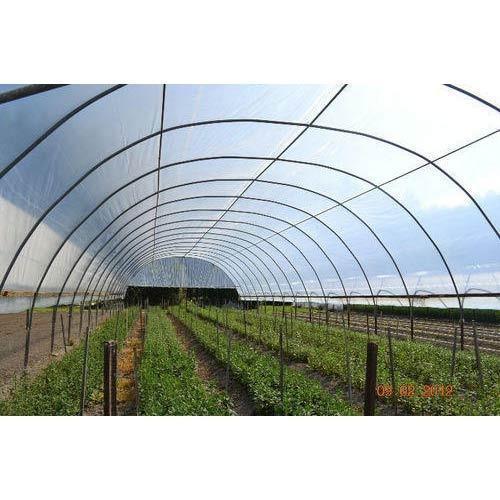
Plastic Greenhouse Film
120.00 - 175.00 INR/Kilograms
Product Details:
X
Plastic Greenhouse Film Price And Quantity
- 500 Kilograms
- 120.00 - 175.00 INR/Kilograms
Plastic Greenhouse Film Trade Information
- 20000 Kilograms Per Day
- 2 Days
Product Description
Plastic greenhouse film, also known as polyethylene greenhouse film, is a durable and versatile covering material used in greenhouse structures. It is made from a transparent or translucent plastic material that allows sunlight to pass through while creating a controlled environment inside the greenhouse. The film helps regulate temperature, humidity, and light levels, providing favorable conditions for plant growth and protection.
FAQ (Frequently Asked Questions):
Q: What is the purpose of plastic greenhouse film?
A: The primary purpose of plastic greenhouse film is to create a protected environment for plants by controlling temperature, humidity, and light levels. It helps extend the growing season, protect crops from adverse weather conditions, and enhance overall plant growth and productivity.
Q: How does plastic greenhouse film work?
A: The film is draped or attached to the greenhouse structure, forming a protective barrier around the plants. It allows sunlight to enter the greenhouse, trapping the heat and creating a greenhouse effect. This effect helps maintain higher temperatures inside the greenhouse, protecting plants from cold temperatures and frost. The film also reduces heat loss during the night, helping to regulate temperature fluctuations.
Q: Can plastic greenhouse film be used for different types of greenhouse structures?
A: Yes, plastic greenhouse film is compatible with various types of greenhouse structures, including hoop houses, cold frames, and high tunnels. It can be customized to fit different sizes and shapes of greenhouse frames.
Q: How long does plastic greenhouse film last?
A: The lifespan of plastic greenhouse film can vary depending on factors such as quality, UV stabilization, and environmental conditions. Typically, greenhouse films can last from one to five years, with higher-quality films having a longer lifespan.
Q: Is plastic greenhouse film resistant to UV radiation?
A: Yes, many plastic greenhouse films are designed with UV stabilizers to enhance their resistance to UV radiation. This helps prolong the life of the film by reducing degradation and yellowing caused by prolonged exposure to sunlight.
Tell us about your requirement

Price:
Quantity
Select Unit
- 50
- 100
- 200
- 250
- 500
- 1000+
Additional detail
Mobile number
Email

 English
English Spanish
Spanish French
French German
German Italian
Italian Chinese (Simplified)
Chinese (Simplified) Japanese
Japanese Korean
Korean Arabic
Arabic Portuguese
Portuguese





 Call Me Free
Call Me Free
